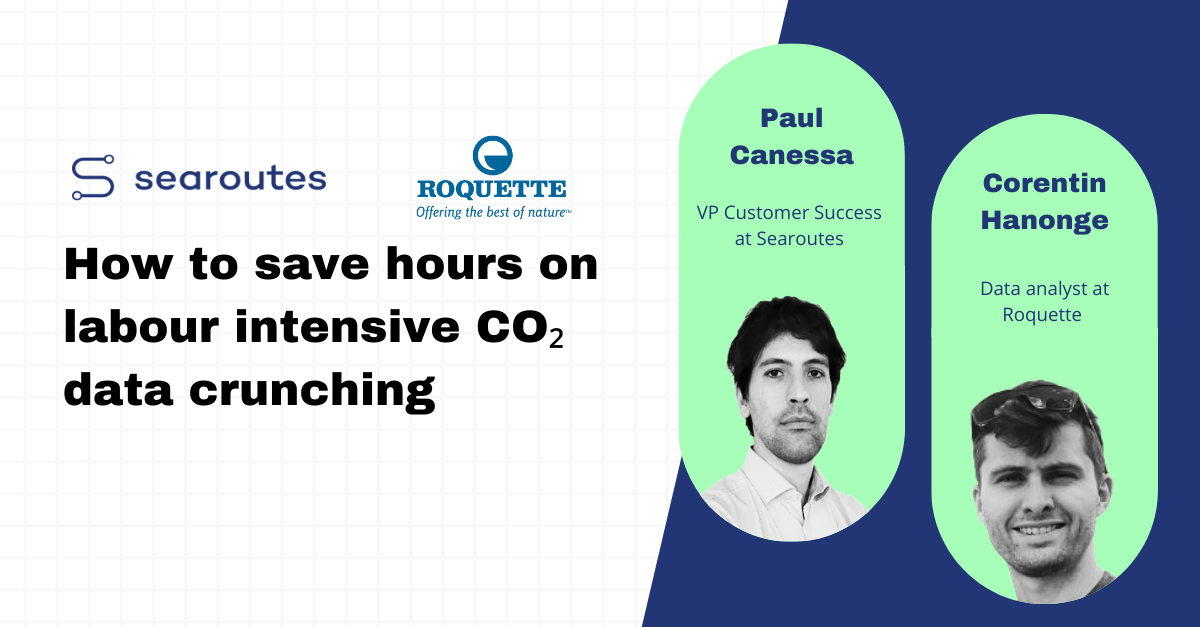
Interview with Corentin Hanonge, Data Analyst at Roquette
1/ What is your role at Roquette?
I’m Corentin Hanonge, a data analyst at Roquette. My role is to provide data-driven insights to support decision-making, particularly in assessing carrier performance from both financial and environmental perspectives. A key focus is ensuring that tender allocations are upheld and that carriers meet their commitments regarding punctuality and operational efficiency. We use internal data tools to monitor and evaluate these aspects.
2/ Can you introduce Roquette?
Roquette Group is a global leader in the production of pharmaceutical ingredients, animal nutrition, food, plant care products, and cosmetics derived from starch. We operate 30 manufacturing sites worldwide and employ 10,000 people globally.
Our logistics network spans all continents and utilizes multiple freight modes, including rail, air, and ocean transport. In Europe, the majority of our shipments rely on ground transportation.
3/ What are Roquette’s CO2 reduction commitments?
Roquette is committed to reducing its global carbon footprint by 25% by 2030, in line with the Science-Based Targets Initiative (SBTi). We report our emissions annually, and they are audited every year.
Our emissions can be broadly categorized into three segments: approximately one-third from manufacturing, one-third from material sourcing (including inbound freight emissions), and the remaining third covering various other aspects, with global outbound transport accounting for 7% of the total. Our sustainability objectives are integrated across all levels of the organization, with the head of our CSR department reporting directly to the CEO.
4/ How did the collaboration with Searoutes begin?
Before working with Searoutes, we partnered with one of their competitors for several years. At the time, our process involved sending raw Excel extracts from our systems, and obtaining results took weeks—sometimes even months.
In 2021, we transitioned to Searoutes while initially maintaining the same Excel-based workflow. The turnaround time was significantly faster, and we appreciated the interactive approach, particularly their responsiveness to data quality issues and assumptions.
5/ What led you to switch from Excel files to an API?
The previous process required multiple assumptions to convert raw data into emissions figures, leading to inconsistencies. More importantly, we lacked ownership of the data, which meant we didn’t feel fully accountable for the numbers.
As Roquette became more engaged in CSR reporting, we became a part of the FRET 21 program, a French framework for emissions reporting and reduction. Given our auditability requirements and reduction targets, transitioning to an API-based system became essential to ensure accuracy, transparency, and a scalable, long-term solution.
6/ Shippers often hesitate to implement API connections. Was the transition difficult?
We decided not to integrate the API directly into our Transport Management System (TMS), which significantly reduced complexity. Instead, we used no-code mapping tools, allowing us to replicate Python functionalities without requiring actual coding. This approach ensures easy internal maintenance and handover, as it only requires a team of data analysts willing to learn—rather than a dedicated development team.
Searoutes provided clear API documentation and dedicated customer support, making the transition seamless. The resulting data is now integrated into our internal dashboards, providing real-time insights for key decision makers, including supply chain and key account managers.
7/ Roquette recently earned the FRET21 label. How did Searoutes contribute to this achievement?
Our management team was eager to formalize Roquette’s sustainability commitments through recognized frameworks, making FRET21 certification a logical next step. Achieving this certification was more challenging than our broader SBTi targets, as it required a detailed focus on Scope 3 freight emissions and a full-scale audit of our emissions data, including factors and data quality.
Using Searoutes’ GLEC- and ISO 14083-certified emissions calculator greatly simplified the auditing process, ensuring that our data met the highest standards of credibility and accuracy.
8/ How has Searoutes data helped drive emissions reductions?
Beyond fleet optimization—such as improving load factors and container fill rates—we developed a decision-making tool powered by Searoutes’ API. This tool enables us to simulate the carbon impact of different supply chain scenarios across various routes and transportation modes. We use it as part of our quarterly reviews.
For instance, this tool has helped us evaluate the impact of HVO (Hydrotreated Vegetable Oil) voyages in Europe, which are being widely adopted, and assess the feasibility of switching from road to rail for a key USA-to-Mexico trade lane.
Modal shifts are a key strategy for emissions reduction. For longer cross-country routes, rail-road combinations often provide the best balance of cost and environmental impact, whereas HVO fuels are particularly effective for shorter road segments.
9/ What’s next for Roquette’s sustainability journey?
We aim to continuously refine our emissions tracking by integrating new fuel types, additional data fields, and enhanced functionalities from Searoutes.
Looking ahead, we are actively exploring modal shifts from air to ocean transport, as longer lead times can significantly reduce emissions. We have also introduced a mandatory 30% Sustainable Aviation Fuel (SAF) content for all air shipments and are investigating biofuel insetting for ocean freight. Beyond freight, Roquette—already ISO 14001-certified—is pursuing advanced carbon certification to further standardize our emissions reporting methodology and reinforce our commitment to sustainability.